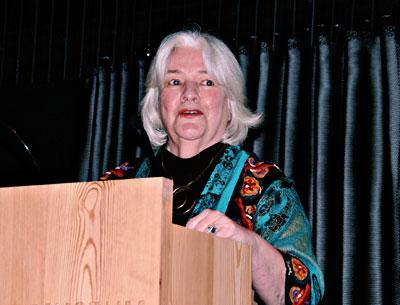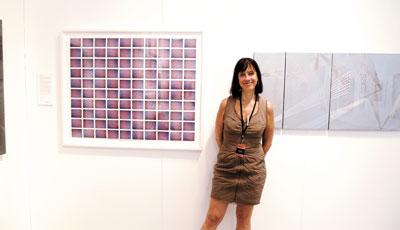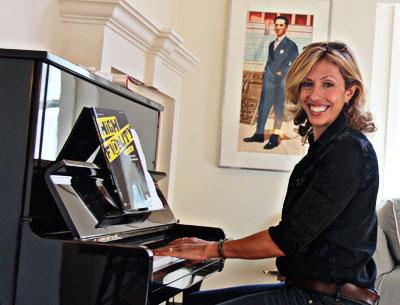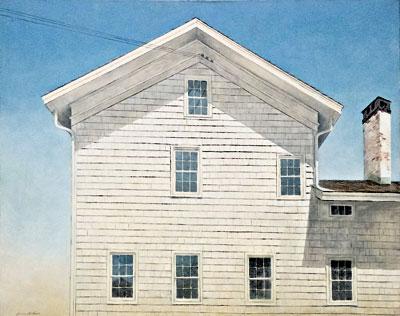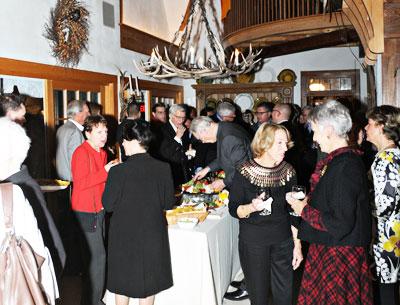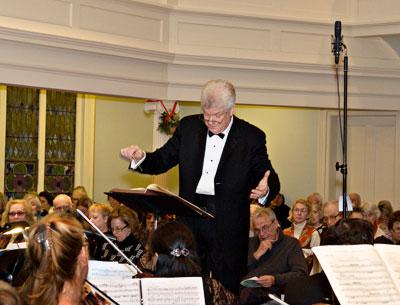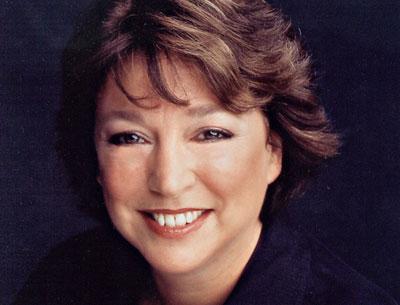Take a Bow, Take 2 Documentary Festival
Take a Bow, Take 2 Documentary Festival
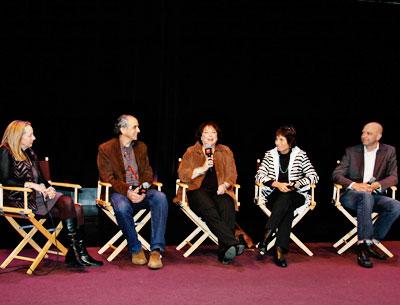
The five-year old Hamptons Take 2 Documentary Festival has fully come into its own. Each year, the festival has grown in size and prestige, and its main event at Bay Street Theatre Saturday night brought some of the most respected names in documentary filmmaking to Sag Harbor.
Jacqui Lofaro, the founder and director of the festival and a Bridgehampton resident, said Saturday that the films that began the day before had been well received and attended, particularly films about Shelter Island and the North Fork, which brought in residents from all over the East End.
In fact, “Shelter Island: Art and Friendship and Discovery” by Mike Canzoniero won the Festival’s First ever audience award on Sunday.
Susan Lacy, the creator of the “American Masters” series for public television and a resident of Sag Harbor, was the evening’s honoree. The night began with a crowded cocktail reception in Bay Street’s lobby and continued with a full-house screening of “Leonard Bernstein: Reaching for the Note,” one of eight films Ms. Lacy directed out of the 185 or more she has produced for the series.
Jamie Bernstein, one of Bernstein’s three children, introduced the documentary, which was first shown at the Hamptons Film Festival and aired on television in 1998, eight years after the conductor’s death. “The film keeps adding value over time,” she said.
Ms. Bernstein also talked about Ms. Lacy’s career. They have been friends since the 1970s, she said, but it was Ms. Lacy’s approach to her subject that convinced the family she was the right person for the job. “We felt the love. We sensed that if she loved the subject, she would tell the story fair and true.” The director “steered away from the sentimental, sensational, and trite,” she added.
The two-hour biography follows the composer from his youth through his last concert with a thoroughness that never seems overdone. It also does not duck the more difficult aspects of Bernstein’s life, including his bisexuality, marital problems, and the challenges he faced as a composer of both popular and classical works while trying to balance his orchestral engagements both in New York and across the globe — Austria, Scotland, Japan, and elsewhere.
His vitality and his action-figure approach to the baton, recorded in countless concerts, still look fresh even in black-and-white footage. The still photos chosen reveal the craggy contours of his face as well as his animated eyes and grin, which are on display in image after image. Bernstein does not seem to age or slow down until much later in life, but as he begins his decline, the documentary captures the dramatic difference in his body and face as he appears to fulfill his own prophecy of his demise at age 72.
After the film, Ms. Lacy said she found seeing it again a highly emotional experience, especially sitting between Ms. Bernstein and Christopher Foss, the son of the composer and conductor Lukas Foss, one of the interviewees.
A panel discussion followed with Ms. Lacy, Ms. Bernstein, and three of the directors who have contributed films to the “American Masters” series. Michael Epstein directed “Hitchcock,” “Selznick and the End of Hollywood,” “None Without Sin,” and “LENNONYC.” Anne Makepeace made the documentaries “I.M. Pei: Building China Modern,” “Robert Capa in Love and War,” and “Edward S. Curtis: Coming to Light.” Roger Sherman made “Alexander Calder” and “Richard Rodgers: The Sweetest Sounds.” They discussed the challenges and rewards of their medium.
Mr. Sherman observed that the Bernstein film was made in such a way that “in the first two-and-a-half minutes, the entire arc is laid out before you. [Ms. Lacy] is grabbing you by the ear and saying, ‘Stay here with me for this.’ This is not easy to do.”
In his Calder film, he said, one of his biggest and most expensive mistakes was going through about 5,000 to 10,000 feet of film before realizing that the mobiles he was shooting were “dead” compared to earlier footage that showed the same pieces moving. The owners of the mobiles were reluctant to put the now extremely valuable pieces in motion, but Mr. Sherman realized he could not make the film without that movement and eventually convinced them.
He also recalled that Ms. Lacy allowed him to expand his film on Rodgers first to 90 minutes and then to two hours, with the proviso of “no more interviews, no more talking — let the music flow.”
According to Ms. Makepeace, Ms. Lacy allows directors to discover for themselves what the story is. “For me, I have to fall madly in love with the person who is at the center of my films.” Curtis was an easy subject to fall in love with, she said, but Capa was more challenging. “He was this hard-gambling, hard-drinking Hungarian, really just not my type.” It was only after she had seen the passion and humanity in Capa’s photography at the International Center of Photography, she said, that she realized she could make a film about him.
Ms. Lacy said making a movie about a subject like Capa was not as easy as people might think. His life was a Hollywood movie. He was Ernest Hemingway’s friend; he was on the beach at Normandy capturing the action on D-Day, he had an affair with Ingrid Bergman during the war at the Ritz in Paris, and he covered five wars altogether until he stepped on a land mine and died. “You couldn’t invent a better story.”
Cornell Capa, who founded I.C.P. to honor his brother, wanted the true story made first, not the Hollywood version. “I’ve never had that experience before,” Ms. Lacy said. “It still took a while to get that all figured out and get access to those images. That is the key to so much of our ability to bring artistry to this and bring our hearts and guts to it — to have the material to do that. It’s a huge element, and it doesn’t happen overnight, or not without a lot of expense.”
Not everyone falls in love with their subjects, said Mr. Epstein. Steven Bach, a colleague who wrote a biography of Leni Riefenstahl, once told him never to choose a subject he loathed, because he would spend every waking hour with that person until the film was finished.
Mr. Epstein agreed that access was essential but said it had to be paired with the freedom, both artistic and journalistic, to make a film with integrity. “If you don’t have the freedom to say no to your subject, even if they are dead, you are completely screwed.”
One of his trickier projects, he said, was working with Yoko Ono on the John Lennon piece. “Yoko didn’t say yes to me and didn’t say yes to the film. She said yes to American Masters, and even after that there was still a lot of struggle at times.” The time Lennon spent in Los Angeles after he left Ono, where he hit rock bottom with addiction, was not something she wanted explored too deeply. But Mr. Epstein argued that the audience needed to go on that journey with Lennon.
According to Ms. Lacy, “We explained to her that first of all, it happened. It was true, and we have to go to that bottom place so John can rise again, come home to you, have Sean, and have this life. And in the end, she loved the film and loved what Michael had done with it.”
As a participant in her father’s documentary, Ms. Bernstein said the family realized that avoiding a topic or trying to gloss over it was only going to make it worse, and trusted that Ms. Lacy would handle the material appropriately. It was something Ms. Lacy admitted that she “sweated bullets over.”
Although a contract always requires that subjects and their families give up editorial control to the director, and subjects are not shown the film until it is completed, Ms. Lacy said that “there is a huge trust factor that we honor, but not at the expense of telling the truth and the story.” In profiling an artist, she explained, it is essential to “connect the human being to the work in some way.”
Once Ms. Lacy had received permission to use Robert Capa’s archive, said Ms. Makepeace, “It was on our shoulders to do it justice and give it the power it deserved.” Knowing how carefully his brother had guarded his legacy, she was nervous at the screening. After it ended, she said, Cornell Capa was silent for a bit and then said simply, “I can die now.”

